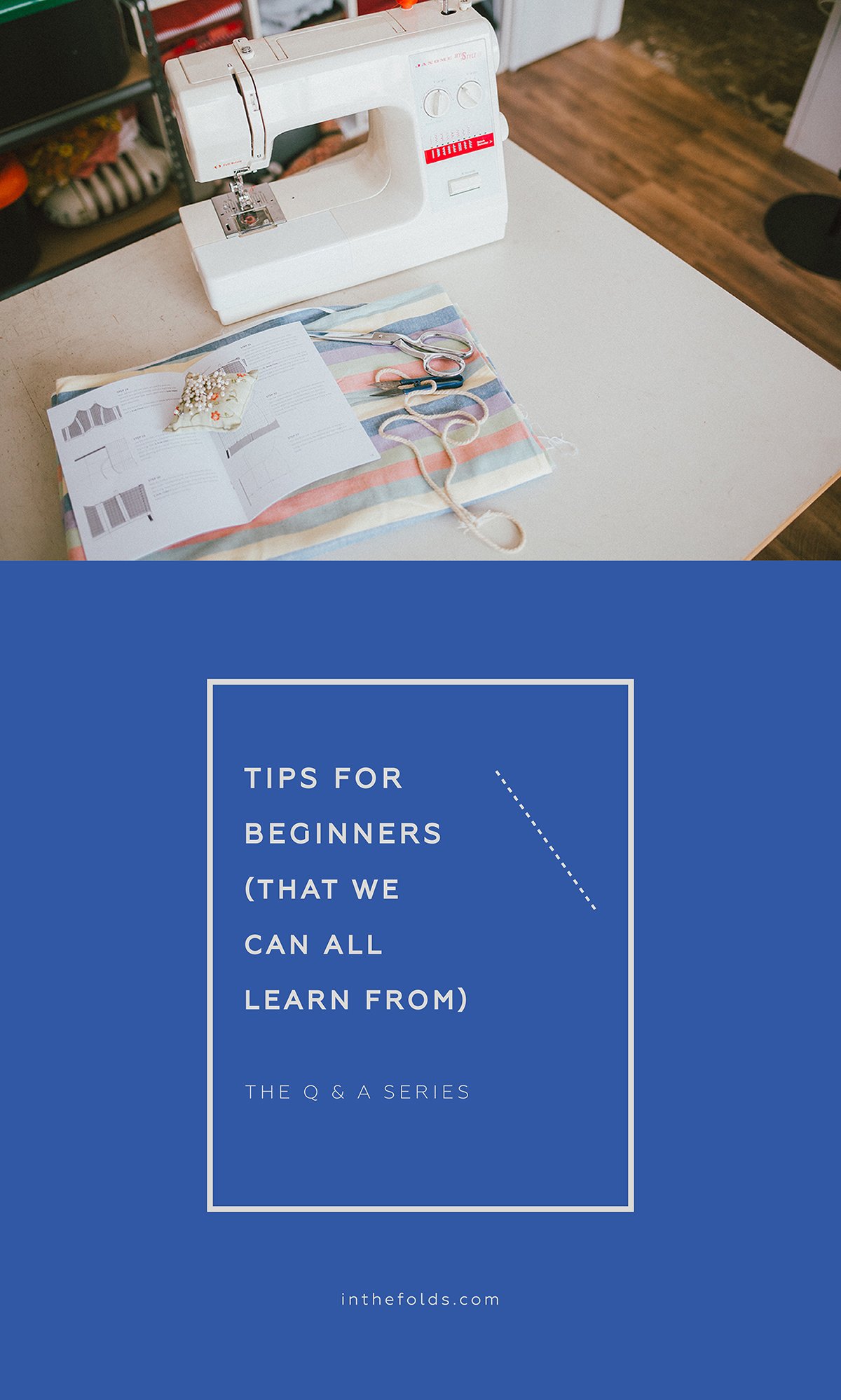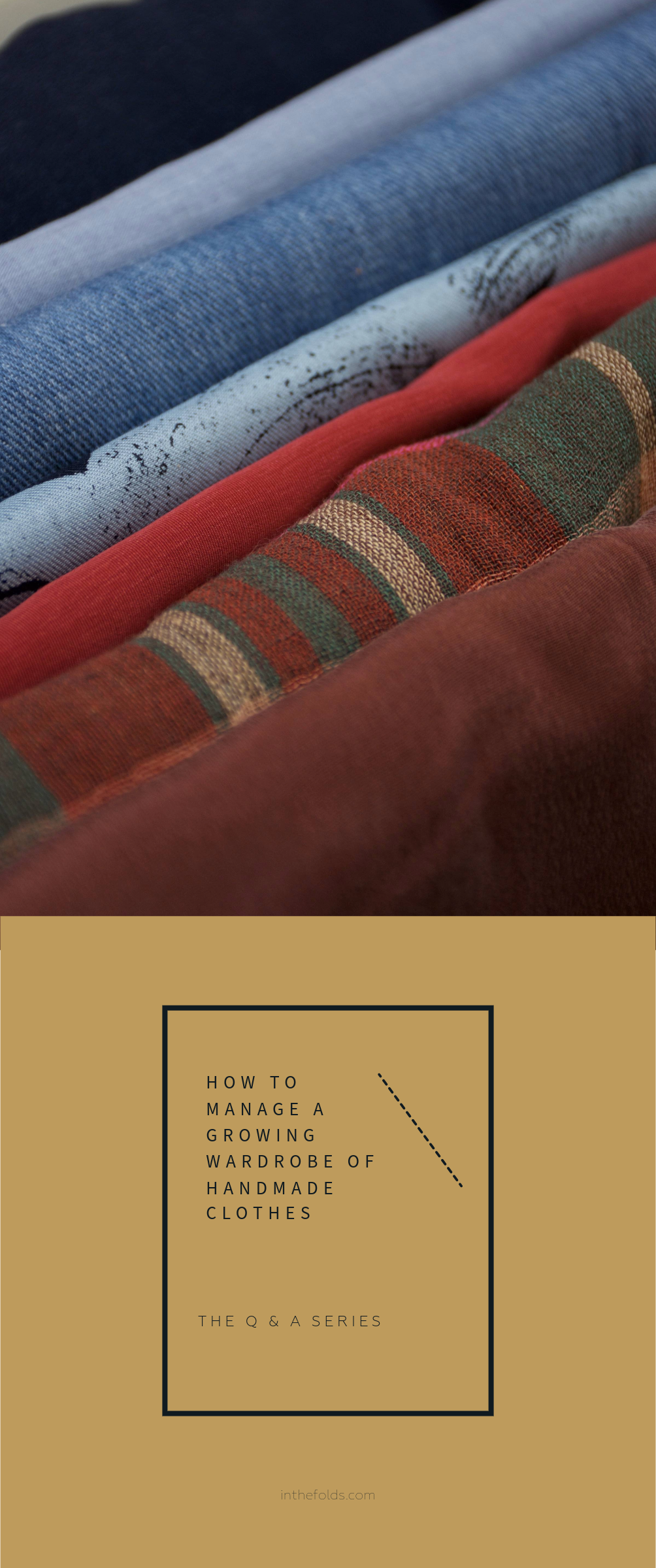THE Q & A SERIES
Top tips for beginners
(that we can all learn from)
Hello Emily,
I just recently discovered your site!
I’ve never used a sewing machine in my life but this Christmas I got my first one. I’ve always loved the idea of being able to make all the clothes I've envisioned instead of looking for something so specific online. However, I should have realised it was going to be a lot harder than I thought.
I live on a very small island in Canada so I don’t have many resources to turn to. I’ve been watching lots of YouTube videos trying to learn how to sew my own clothes but I’m so overwhelmed! I’m so grateful I’ve found your blog, however, I’d love to know any advice you could give for a newbie. I’m so uncertain about how to follow a pattern, how to make seams look nice on the inside, what bias tape is used for, and other things. I’ve found reading about sewing a bit difficult considering I literally know nothing about it! If you have any advice or recommendations I’d love to know!
I’ve heard great things about your blog and I can’t wait to try making something from it!
Cheers,
Gabrielle
Hi Gabrielle,
How exciting! Welcome to the sewing club!
For today's issue of the Q & A Series I thought I would give you my top tips for learning to sew, but I think they will be useful to anyone who sews.
1. Be patient with yourself
Learning to do new things with your hands is hard! Over time your new-found skills will become muscle memory, but until then it will take some getting used to. Be patient with yourself and celebrate the small achievements along the way! Cut something straight? Celebrate! Sewed your first French seam? Celebrate!
2. Don't do too much too soon
I think one of the main things that scares people away from sewing is biting off more than you can chew right at the beginning. Although it is very exciting to imagine a completely me-made wardrobe in the most beautiful fabrics, the reality is that’s going to take time and practice. A lot of time and practice! So start with something simple and work on building up your skills. Starting with something that is forgiving in regard to fit would be my suggestion. This post is a good place to start if you’re looking to sew an In the Folds pattern.
3. Don’t shy away from the “tricky” stuff.
I know I just said not to to take on too much too soon, but the opposite is also true. Don’t let new things scare you off! Sewing is supposed to be fun, so give yourself a chance to experiment and try new things. It might not always go to plan, but I promise you, you will learn more from the mistakes you make than from the things you do right.
I hear of so many sewists who tailor their sewing plans around their fear of sewing zips. Just give it a go! Although the first few might not be as invisible as you hope, after a few goes you will get the hang of it. If you’ve been too scared to give an invisible zip a go, check out this post and just give it a try. What's the worst that can happen?
4. Find ways to enjoy unpicking / seam ripping
Let’s be real. When you sew (whether you are a beginner or an experienced maker) you are going to end up spending a lot of time unpicking seams that didn’t go to plan. It’s all part of the process! Find ways to relax as you do this, rather than spending the whole time regretting the mistake.
I love to put something light on Netflix and get comfy on the couch when I have unpicking to do and then relax into it. I almost look forward to it now that I’ve re-framed it!
5. If it’s not working, PUT IT DOWN
My first sewing teacher (back when I was 7 years old) taught me this. Sometimes things just don’t go to plan and sewing while frustrated just leads to more mistakes. You’re best off putting your project down for a few hours (or even better overnight) and coming back with fresh eyes.
6. Get comfortable making toiles
A toile is a practice version of a garment. I know a lot of people dread making a toile, but for me it makes me enjoy the process more. It means that I can check the fit and any tricky details before cutting into my “real” fabric. This means that when I’m sewing the final garment I can just relax into the process and won’t get any surprises!
7. Use Instagram hashtags to work out what you’d like to sew
Instagram is a great tool for sewists. Most independent pattern companies use hashtags to identify their patterns. You can search the hashtags of a pattern you are thinking about sewing and see it made up in a range of different fabrics and on a lot of different bodies. You can also see if there are any sewing or fitting tips related to the pattern.
8. Get some sewing friends
If you can, find some people in your local area to chat to about sewing. Is there a social sewing group in your area you could connect with? Or some online options?
By connecting with other makers you can get feedback about patterns you are thinking about trying, get fitting tips and just geek out on all things sewing! We do a lot of this in our Curated by ITF online group, so if you’re looking for a fun space to connect with other makers from all over the world, you might like to join us.
9. Download our e-book ‘The Little Book of Seam Finishes’
If you haven’t downloaded it already, you should definitely check out our ebook. It runs you through the most used seam finishes and where you can apply them.
10. Don't forget to take it one step at a time
Sewing a garment is a lot like following a recipe. If you were learning to cook you would start with the basics and then apply what you learned to other recipes as you continue to learn. Do the same for sewing.
Try not to worry about what you don’t know (I have been sewing for 25 years and there are still plenty of things I don’t know how to do) and focus on what you do know.
If you can sew a straight seam and a curved seam then you can probably make a top. And by making a simple top you can then learn how to understitch and apply bias binding. This leads me to my last tip...
11. Don’t worry about new techniques or skills until you actually need them
My approach to learning has always been to learn the skill when I actually need it. When you need a skill it forces you to take the time to learn it and there is also more at stake (as you want the finished outcome of what this skill brings). This approach has kept me going when sewing, as well as running a business! When you get to that project that has a tricky technique, give it a go then, rather than worrying about it now.
Best of luck on your sewing adventures!
Emily
For more issues of the Q & A series, you can check out the archive here.
WHAT YOU’VE BEEN MAKING
Flynn jacket made by @layer_make
Acton dress made by @threadannebobbin
Barkly skirt made by @mamasuesews












